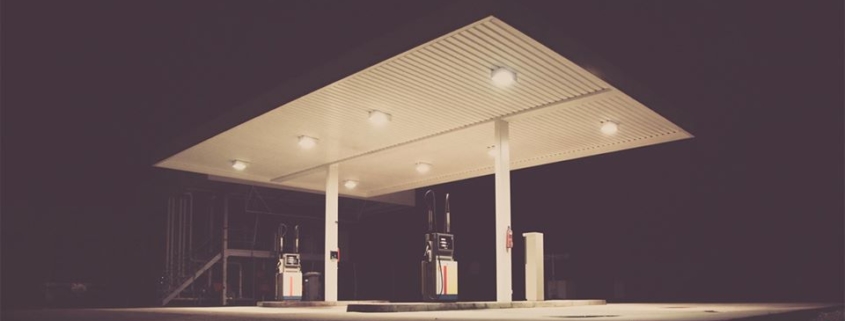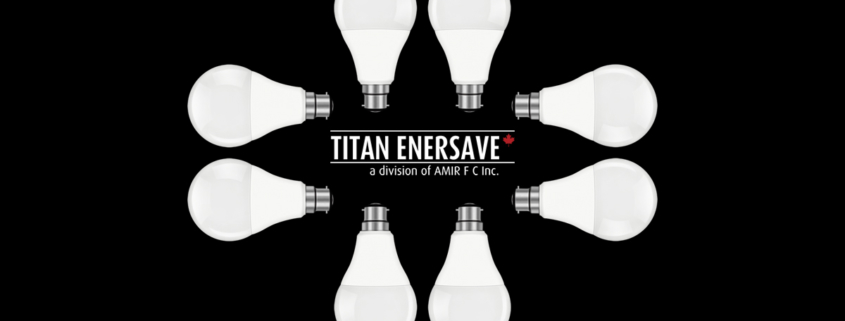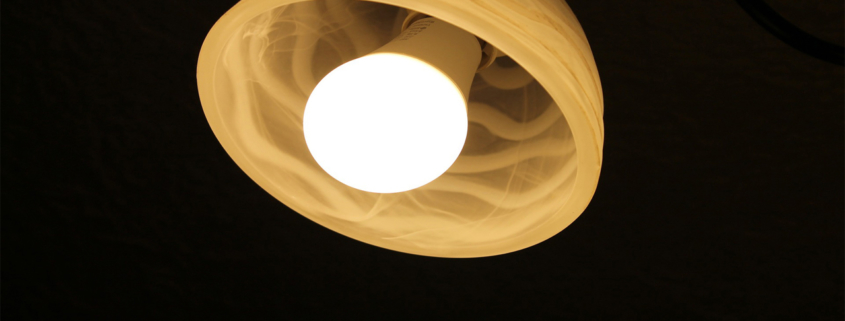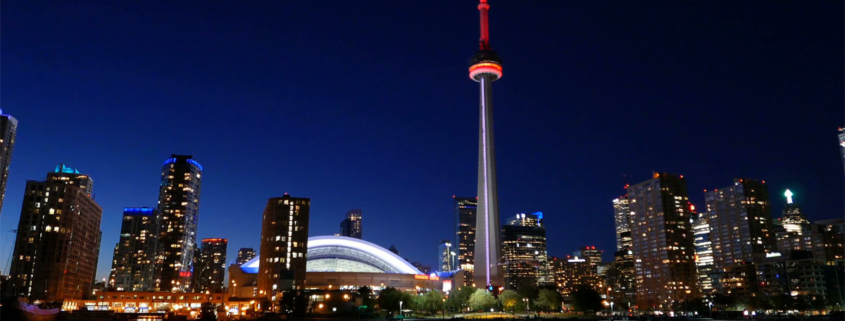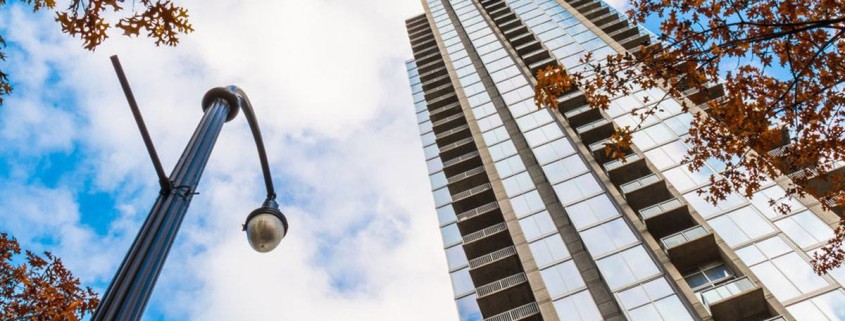HID lights are a type of high-density discharge lighting that is a tried-and-tested solution for many indoor and outdoor installations. The bright light offered by this type of lighting technology makes them an effective option for large spaces such as stadiums, parking lots, and warehouses. However, HID now faces strong competition from LED technology, which has experienced huge technological advancements over the last few years.
If you’re looking for a lighting solution to light a large space, which option should you choose: the traditional choice of HID lighting or the newer technology of LED? To help you understand what type of lighting will provide the best solution for your business, let’s take a look at the pros and cons of each option.
LED vs. HID Lights – What’s the Difference?
HID and LED lighting work in very different ways. HID stands for “high-intensity discharge.” HID lamps work by passing a current through a small capsule of gas, which causes a reaction that creates a small amount of light. HID lights will take a few seconds to warm up before they reach their full light output. These types of lights require ballasts to regulate the current that passes through the gas.
Light-emitting diode lighting, which is commonly referred to as LED lighting, produces light through electroluminescence. When the diodes in a LED lamp are connected to a circuit, it causes photons to be produced, which are then focused into a light source by the lamp. LED lamps are controlled by a chip within the lamp and produce light instantly.
So, why is it important to understand the two types of technology? The technology plays a large role in determining the pros and cons of each solution. Read on to learn more.
Lifespan
Lifespan is one area where the technology powering the lighting solution plays a large role. The tech behind LEDs gives them a significantly longer lifespan than many other types of lighting, including HID options. In fact, LEDs can easily last for 50,000 hours with some having a life expectancy of up to 100,000 hours. HIDs, on the other hand, are only expected to be functional for a maximum of 25,000 hours. In many situations, replacing a lamp is an easy task; however, in situations where HIDs are often used, this may not be so simple. Warehouses, street lighting, parking lots, and gas stations all have lights that are mounted at a height that makes replacing a bulb or entire lamp a time-consuming project, so choosing a lighting solution that only requires replacement every 100,000 hours, such as LEDs, instead of every 25,000 hours like HIDs offers significant time-saving advantages.
Verdict: LED wins hands-down over HID when it comes to lifespan!
Light Output
Both LED and HID offer the benefit of being able to produce large amounts of light, which is one of the reasons both of these options are popular solutions for lighting vast spaces like parking lots.
There is one other key thing to consider when it comes to light output, and that’s how long each type of lamp will provide the required amount of light for. Although this topic sounds like it should fall under the lifespan category, we feel that it’s important enough to warrant its own section. Although products are rated with an expected lifespan, you’ll also need to pay attention to the expected lumen output throughout the product’s lifespan. For example, HID lights generally lose 50% of their output ability during the first half of their expected lifespan. This means that the lamp will produce less than half of the initial output over the second half of its life. If your business needs strong lighting, the lamp will need to be replaced early. The LED lighting also suffers from a loss of output over time; however, it is significantly less than HID lamps. When you see the lifespan rating for an LED lamp, you will see the number of hours plus a number rating such as L70, meaning the bulb will maintain at least 70% of its output for the stated number of hours. This is only a thirty percent loss that will have a limited impact on your business.
Verdict: With LEDs having the ability to maintain output levels for longer, they beat HID options easily in this category.
Energy Efficiency
Energy efficiency is one of the most important factors to consider, especially when you’re looking to replace lighting that covers a large area, as the costs of operating powerful lights can quickly add up! Although HIDs do effectively turn energy into light, they have one major issue that affects their efficiency—they produce 360-degree light. When light is produced that isn’t directional, it needs to be reflected in the required direction. This process can result in the loss of a significant amount of light that isn’t correctly reflected.
Why does this matter? Simply put, it matters because you’re paying to produce more light than you actually need in order to compensate for the light that’s lost. On the other hand, LEDs are fully directional, and light-emitting diodes are currently one of the most energy-efficient types of lighting technology on the market. Switching to LEDs will offer significant savings in energy costs over the duration of their lifespan. The LED lighting provides high output per watt for the full duration of its use, which means that your lighting will only use low amounts of electricity to produce the necessary lighting.
As we mentioned above, HID lighting loses a significant amount of its lighting ability in the first 6 months of use; however, even though it’s producing less light, it will still be using the same amount of electricity, meaning the longer the lamp is in use, the less energy efficient it becomes.
Verdict: LEDs offer the best long-term energy efficiency.
Cost
To really understand the cost differences between these two types of products, we’ll need to split this category into two sections: initial cost and long-term cost.
Initial Cost
This is one area where HIDs come out on top of LEDs. As LED is a newer technology, the cost of LED products is still somewhat higher than the HID equivalent. So, the initial installation cost for installing HIDs to cover large spaces will be less than if you were to install LED alternatives. The cost difference will depend on the type and number of lighting products you need to adequately light the area. That being said, there are a number of rebates available for LED lighting—check with your local energy supplier to see if they offer rebates for switching to LED.
Long-Term Cost
Although HIDs win on initial cost outlay, they don’t fair as well in regards to long-term costs. HID lights have a much shorter lifespan than LED lights. This means they’ll need to be replaced up to four times more often than LED options, which leads to more long-term costs for part replacement and labor. They’ll also use significantly more energy over a long-term period than the LED equivalent, creating higher long-term energy costs.
Although his win on initial cost outlay, they don’t fair as well in regards to long-term costs. HID lights have a much shorter lifespan than LED lights. This means they’ll need to be replaced up to four times more often than LED options, which leads to more long-term costs for part replacement and labor. They’ll also use significantly more energy over a long-term period than the LED equivalent, creating higher long-term energy costs.rom lighting that maintains its output for longer, needs replacing less often and uses significantly less energy. The long-term benefits will reduce the amount you need to spend to keep your lighting bright and effective for many years to come. Whether you’re looking to revamp your warehouse lighting, replace energy-sucking stadium lights, keep your parking lot safe, or attract customers to your gas station, LED is a smart and cost-effective lighting choice.
Which Lighting Solution Is Right for your Business: LED or HID?
Although his win on initial cost outlay, they don’t fair as well in regards to long-term costs. HID lights have a much shorter lifespan than LED lights. This means they’ll need to be replaced up to four times more often than LED options, which leads to more long-term costs for part replacement and labor. They’ll also use significantly more energy over a long-term period than the LED equivalent, creating higher long-term energy costs.rom lighting that maintains its output for longer, needs replacing less often, and uses significantly less energy. The long-term benefits will reduce the amount you need to spend to keep your lighting bright and effective for many years to come. Whether you’re looking to revamp your warehouse lighting, replace energy-sucking stadium lights, keep your parking lot safe, or attract customers to your gas station, LED is a smart and cost-effective lighting choice.

